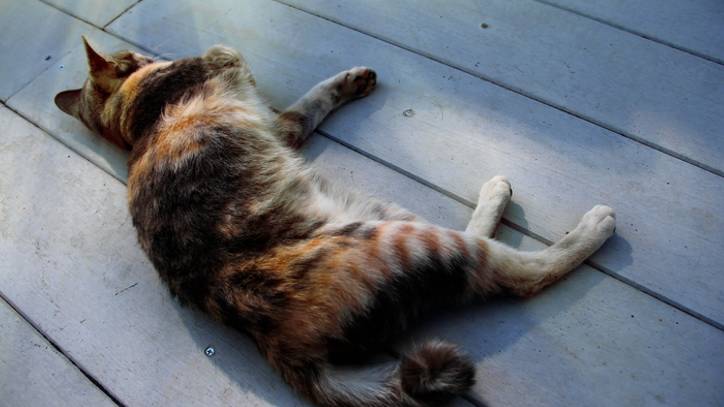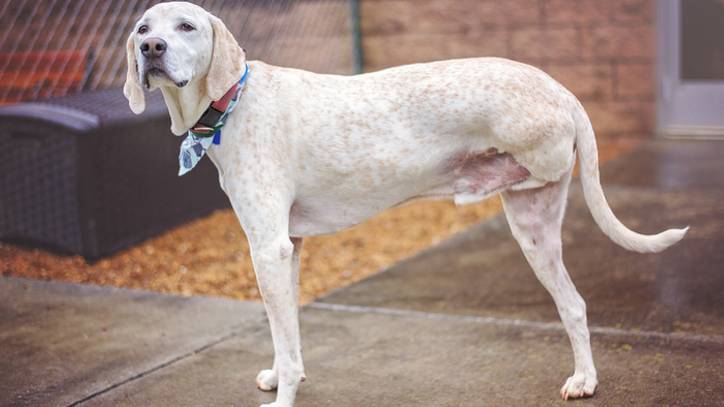Adopting and caring for three-legged dogs and cats: A vet's guide
Considering adopting a three-legged dog? Or cat needing amputation? Here’s what you need to know about tri-pawds!

Three-legged dogs are not uncommon. Pets can end up with three legs for many different reasons, and sometimes we may not know the original reason why rescue cats and dogs have lost a limb.
Three-legged pets are still wonderful companions and can have a great quality of life – but they do need a little extra time and care when compared to other pets.
So, if you are facing a pet’s amputation, or considering adopting a dog or cat with three legs, here’s what you need to know!
Can three-legged pets walk?
Yes! Almost all pets with three legs will be able to move around well after an amputation, as long as their other three legs are still healthy. For example, they should be able to:
- Get up by themselves
- Walk or even run around
- Go to the toilet by themselves
- Get up and down steps
- Play with toys
Some three-legged cats and dogs will be able to run around more or less as normal, especially if they are young, lean, and fit.
How long will it take my pet to adjust to 3 legs?
It will take some time for your cat or dog to adjust to moving around on three legs, so don’t be discouraged if they are not running around right away.
First, they will have to recover from the surgery itself, which may take several weeks, especially if they are older or were unwell for another reason. Their body needs to get rid of the anaesthetic drugs, and their skin and muscle need to heal from the surgery. They should also be on painkillers immediately after the surgery, which may make them drowsy or wobbly, meaning they look less steady than they are.
Then, they will need to build up some muscle to adjust to holding their body in a different way. This is more challenging if your cat or dog has lost a front leg, as more of the body’s weight goes through the front legs than the back legs.
It can take several weeks or even months to build this muscle up, especially if your pet is older or overweight. However, you should be able to see a slow but steady improvement over this time.

What is the life expectancy of a three-legged pet?
If a dog or cat has a leg amputated because of injury, then their life expectancy should be relatively normal. However, you will need to be sure to monitor and treat them for any arthritis in their other three limbs, as this can be more severe and even end up requiring euthanasia.
Sometimes a dog or cat will have a limb amputated for another medical reason, such as a tumour. In that case, their life expectancy will depend on what sort of tumour they had. If you are in this situation, you should speak to your veterinarian about your pet’s prognosis before the surgery.
What to expect if your pet needs an amputation
Amputation surgery is quite a common procedure for veterinarians. Your regular veterinarian may be able to perform it at your local clinic, or you may need to be referred to a specialist for this.
After the surgery, your pet will need strong painkillers for the next few days. They may need to stay in the clinic to receive these, or you may be able to administer them at home – ask your local veterinarian in advance so you are prepared.
Your pet will have a surgical wound that you will need to take care of after the surgery. These wounds are usually around the width of the shoulder in a forelimb, or around the length of a pelvis in the hindlimb.
These are often covered by a dressing initially, which you may need to change at home. After it is uncovered, you will need to monitor it for any signs of redness, swelling or discharge that might suggest infection.
It will take your pet some time to adjust to having three legs (see earlier) and initially they will need to rest at home. After a while, you can start taking them out on short walks to get them used to moving around – speak to your veterinarian to find out when the right time for this is for your dog.
What to expect when adopting a three-legged pet
Three-legged cats and dogs are much the same as other pets in many respects, but they may need a little extra help and support. For example, they might find stairs more difficult than other pets, so you should make sure they have everything they need on one level of your home.
You should be aware that three-legged pets will be more prone to develop arthritis in their remaining limbs, due to the extra weight that they are taking. You should be sure to keep three-legged dogs and cats at a healthy weight, as obesity can make arthritis worse.
Regular exercise is important, and some pets may benefit from hydrotherapy, too. There are also some supplements that may help with arthritis in pets – ask your veterinarian for a recommendation.
Some of the questions to ask before adopting a three-legged pet might include:
- Why was the pet’s leg amputated?
- If it was amputated due to trauma, do they have any other injuries that you need to be aware of?
- If it was not amputated due to trauma, what was the reason for the surgery? Is it likely to cause any long-term issues (e.g. cancer such as sarcoma or osteosarcoma that might spread to other parts of the body)
- How mobile is the pet? Can they cope with steps or stairs?
- Does the pet have any existing signs of arthritis that might need treatment? If so, what are the expected costs of this treatment?

How to prepare your home for a three-legged pet
There are a few changes that you may want to make at home if your pet is having an amputation, or if you are adopting a three-legged pet.
These include:
- Providing food, water, and bedding on the same level, so your pet does not have to go up and down steps.
- Using a ramp to help them get in or out of the car, or up any steps between your home and your yard.
- Offering them deep bedding that is comfortable to lie in, but not too soft to cause difficulties getting out of. Memory foam mattresses are ideal for this.
How to provide long-term care for a three-legged pet
Long-term, there are some things that you can do to help your tripawd stay as comfortable as possible:
- Keep your pet at a slim (but healthy) weight, to minimise the strain on their joints.
- Exercise them regularly, but gently, to help maintain muscle mass.
- Consider hydrotherapy or physiotherapy with a qualified professional to keep their joints comfortable and mobile.
- Learn to spot the early signs of arthritis and see your veterinarian regularly for check-ups to help with this.
- Treat any arthritis early to keep them as active as possible as they get older.
Summary
Caring for a three-legged dog or cat can take a little extra time and energy, and you need to be prepared for them to develop some arthritis as they get older. However, with the right care, tripawds can live long, happy lives, and are just as loving and affectionate as other pets.
PetsRadar Newsletter
Get the best advice, tips and top tech for your beloved Pets
Ruth has been a small animal GP vet for 10 years and is particularly interested in internal medicine. She graduated from the University of Cambridge in 204 and has a certificate in Small Animal Medicine. Whilst she loves all kinds of animals, she has a soft spot for cats.
